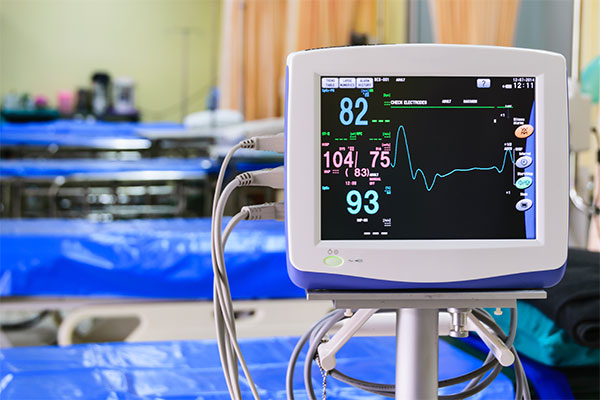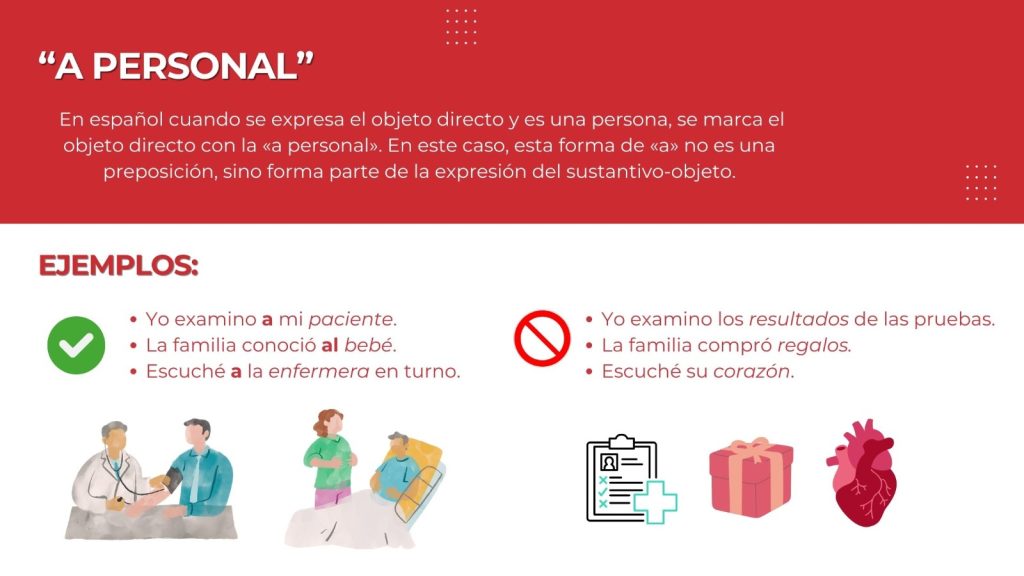Do you ever have to take vital signs or communicate to your patients about them in Spanish?
In the hospital setting you may have your patients hooked up to the monitors and you don’t have to explain too much except a result here and there. But if you work in the outpatient clinical setting, taking vital signs in Spanish requires handful of special instructions and vocabulary that you may not be too familiar with.
I recently taught a live lesson in our Learning Medical Spanish Facebook group and I wanted to share it here too. Btw – that group is free, you just have to request access to it – go ahead and join if you’re learning medical Spanish!
Here is the Vital Signs in Spanish lesson I taught to the Facebook group:
Subscribe to our YouTube Channel to see all of our lessons and get the latest videos right away!
In summary, we like to coach our students to talk about vital signs in a few steps that take you sequentially through: informing your patient what you’re about to do, asking them to do whatever they need to do so you can measure whatever you need to measure, and then be able to give the results to your patient.
For example, let’s look at weighing a patient:
- Informing them: Bueno, sígame por favor. Vamos a pesarle.
- A simple instruction: Quítese los zapatos por favor y súbase a la báscula (la pesa). Gracias, bájese por favor.
- Giving the results: Usted pesa # libras/kilos. ¿Ha subido o bajado de peso recientemente?
As you can see above, taking vital signs uses a few different grammar structures:
- When informing your patient what you’re going to do, you’ll use the indirect object pronoun that best relates to the patient. It will either be “le” if you’re working with an adult, or “te” if you’re working with a child. Ex. Necesito pesarle. Necesito tomarle la temperatura. Voy a tomarte la presión (to a child).
- When giving the simple instruction, you’ll use the imperative (command) form of the verb. Ex. Siéntese por favor (adult). Siéntate por favor (child).
- When giving the results, you simply need to know your numbers in Spanish and the units of measure. Ex. Su pulsó está en 60 (sesenta) latidos por minuto (adult). Tu pulso está en 60 latidos por minuto (child).
Some phrases to begin and inform your patients about what you’re doing
| Ahora voy a Ahora necesito | Now I’m going to Now I need to |
| ¿Me permite…? – Tomarle la temperatura? (la presión) – Medirle el azúcar (el oxígeno) – Pesarle | Would you allow me to…? – Take your temperature (blood pressure) – Measure your blood sugar (oxygen) – Weigh you |
Common Vital Signs Verbs:
| Descansar por 5 minutos | Rest for 5 minutes |
| No cruzar las piernas | Don’t cross your legs |
| Permitirme su brazo (muñeca, dedo) | Allow me your arm (wrist, finger) |
| Poner los dos pies en el piso | Put both feet on the floor |
| Quitarse la chaqueta (el suéter, los zapatos) | Take off your jacket (sweater, shoes) |
| Relajarse | Relax |
| Respirar normal | Breathe normally |
| Señalar | Point out / show |
| Sentarse | Sit down |
| Subir la manga | Raise your sleeve |
| Subirse a la báscula | Step onto the scale |
Taking temperature in Spanish:
| Informing: Voy a tomarle la temperatura. | I’m going to take your temperature |
| Sharing Results: Su temperatura está en _____ “Muy bien, su temperatura está en noventa y ocho punto siete grados” | Your temperature is at _____ “Good, your temperature is at 98.7 degrees” |
Talking through taking a blood pressure in Spanish:
| Informing: Necesito tomarle la presión | I need to take your blood pressure |
| Instructing: Siéntese aquí y quítese el suéter por favor Relájese y ponga su brazo aquí por favor No cruce las piernas, necesita los dos pies en el piso | Sit here and take off your sweater please Relax and place your arm here please Don’t cross your legs, you need both feel on the floor |
| Sharing Results: Hoy, su presión está en ciento treinta sobre noventa Vamos a tomarla otra vez en unos minutos | Today your blood pressure is at 130/90 We’ll take it again in a few minutes |
Getting your patient’s pulse in Spanish:
| Informing: Voy a tomarle el pulso | I’m going to take your pulse |
| Instructing: Permítame su muñeca por favor | Allow me your wrist please |
| Sharing Results: Su pulso está en sesenta y cuatro latidos por minuto | Your pulse is 64 beats per minute |
Weighing your patient in Spanish:
| Informing: Necesitamos pesarle | We need to weigh you |
| Instructing: Quítese la chaqueta y los zapatos por favor Y súbase a la báscula | Take off your jacket and shoes please And step onto the scale |
| Sharing Results: Hoy usted pesa ciento cincuenta y cinco libras | Today you weight 155 pounds |
Measuring your patient’s pulse-ox in Spanish:
| Informing: Vamos a medirle el oxígeno | We’re going to measure your pulse-ox |
| Instructing: Permítame su dedo por favor No se quite el oxímetro por favor. | Allow me your finger please Don’t take off the pulse oximeter please |
| Sharing Results: Su oxígeno está en 98% (por ciento) | Your pulse-ox is at 98% |
Explaining vital signs results and asking some follow-up questions
| Hoy su ____ está (un poco / muy): – alto(a) – bajo(a) | Today your ____ is (a little / very): – high – low |
| ¿Sabe cuál es su ____ normal? | Do you know what your usual ____ is? |
| ¿Alguna vez le han dicho que tiene ____ alto / bajo? | Has anyone ever told you that you have high / low ____? |
| Necesitamos monitorear su ____ por algunos meses | We need to monitor your ____ for a few months |
| ¿Podemos conversar un poquito sobre su ____? | Can we talk a little bit about your ____? |
Learn Spanish numbers and vital signs vocabulary in Spanish with this Quizlet activity:
Register here for our next FREE Medical Spanish Crash Course!
Here’s what we’ll help you do in 10 days:
- Get 2 essential strategies for learning Spanish as an adult
- Learn how to get a History in Spanish
- Get comfortable talking through a complete physical exam in Spanish
- Walk away with a 6 month blueprint for learning medical Spanish





